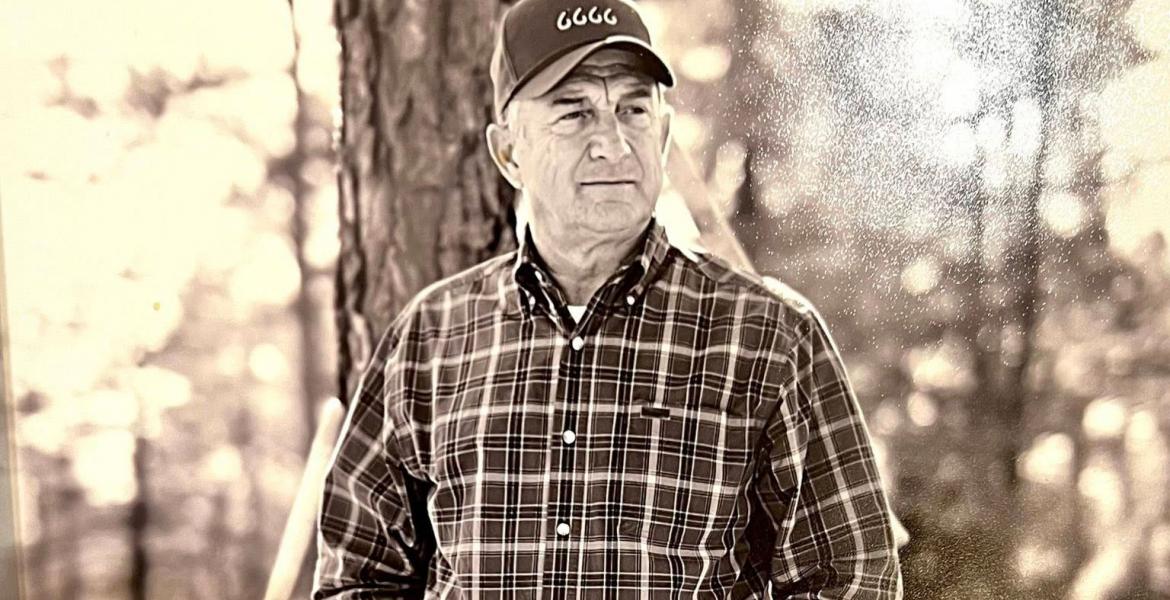OPINION — Producing sustainable local news is really difficult. Radio station KDCD tried but couldn’t keep its website up when breaking news. In the end, when unable to compete with us, as the story goes, the result is they’ll hate us. The San Angelo Police Department attempted to compete with us by becoming its own little media company when Travis Griffith ran the public affairs office. After all, police have all the information; why do police need any media organization at all to watch over them?
Chief Frank Carter didn’t seem to think it was that big of a deal when Griffith began publishing police press releases on social media and on the police website before notifying the media. Our reporters practically stopped asking for any information at all from the police department because if we received an acknowledgment, it was usually so garbled or vague no one could make much out of it. And we didn't want to tip off our newest competitors about what we were looking at. Griffith's sidekick at police public affairs, Tracy Piatt-Fox, had a reputation for making up police terms for common items. The most memorable was when she attempted to obfuscate calling a weapon a knife by referring to it as an “edged object.”
In response to our brand-new competitor, we placed the SAPD on our leaderboard, treating the public government agency like we did the local TV stations or the newspaper. Whenever Griffith’s PR operation posted a press release, we’d repackage it quickly and drown them out through our platform. The precedent for copying city government press releases had been set with the City public information officer (PIO) years prior. Although City PIO Anthony Wilson would bemoan how poorly written police department press releases were.
The competition led to Griffith demanding Chief Carter declare us an illegitimate news agency or that we be “decertified” so his office could stop answering our questions. I don’t know how a government agency decertifies someone to report the news, but today, in Joe Biden’s America, I suppose anything is possible. There certainly was a disdain for the First Amendment at the SAPD back then.
The shenanigans at the police public affairs came crashing down just when the COVID-19 pandemic was taking hold.
In May 2020, about two months into the COVID-19 shutdown, Travis Griffith was still the public affairs officer during a standoff on E. 20th Street near Chadbourne Street. Two subjects, as police called them, had holed up inside a house after they’d stolen a 30-pack of beer from the Smoker’s Outlet around the corner.
As the standoff progressed with SWAT, our reporter at the scene, Manny Diaz, was told by officers to move way back because police were about to deploy “tear gas.”
During breaking stories like this, we have a system that makes us competitive. One reporter is at the scene, usually with a video camera and iPhone, and a second reporter who is “base” back at the office writing the story as information, photos, and videos are fed to him via a private mobile app. When Diaz mentioned tear gas was about to be used, acting as base, I updated and reported the article stating so. After all, that’s what police told us!
Apparently, “tear gas” is a trigger word for our San Angelo police.
After SWAT stormed the old house, the standoff ended without any killings, and police were able to retrieve the 30-pack of beer. Two male suspects were whisked away to jail from the scene that appeared inundated in a cloud of visible bluish smoke. Griffith's sidekick Tracy Piatt-Fox approached Diaz and told him public affairs was finished at the scene and she’d send an update via email. With that, Diaz packed up and drove away.
On his way home, Manny called with many expletives and said that Griffith had double-crossed us. Piatt-Fox was holding a press conference with the compliant TV news media on the other side of the scene. We were not invited even though we had the most questions. The compliant media, of course, had no questions, as Piatt-Fox repeated multiple times that there was no tear gas, or what she called “chemical munitions.” She repeated herself so many times that it seemed to me that she was lying.
The next day, we investigated. Diaz and John Basquez interviewed witnesses, a resident of the house where the incident took place, and the 30-pack thieves in the Tom Green County Jail. The woman who was in the house with the beer thieves complained of burning eyes and difficulty breathing. From jail, the 30-pack thieves complained of the same. We are not experts in chemical munitions, but from our video footage of lots of bluish smoke the night prior and the eyewitness accounts, many with supporting evidence from Facebook Live videos, we were convinced the San Angelo Police Department was covering something up. The day-after news report, well sourced from multiple witnesses, was damning of our police. But we had not published it.
Chief Frank Carter smelled a rat and knew something was up with us. He is that good at telepathy. The chief showed up at our office to explain what happened, and he was convincing. We modified the piece (you can watch it below) after our 30-minute conversation with Carter.
All Griffith had to do was explain what happened instead of acting like he was hiding something. Yet, when you're competitors as the police department believed they were, you're supposed to hide things from the other side, I suppose. I am still not convinced police did not deploy some kind of chemical that night. There are too many witnesses saying they saw strange smoke and felt the effects.
In the aftermath, Carter called a truce. He promised me his public affairs office would first email all press releases to us and then wait 30 minutes before posting the press release to Facebook. The problem went away. Eventually, Griffith and his sidekick Piatt-Fox went away, too. Then, new public affairs officers quickly rebuilt trust with us.
I am a combat veteran, and albeit an Air Force kind, I understand why paramilitary organizations like police departments act the way they do. Accordingly, we have always treated police at the scenes they are working with the utmost respect and stayed out of their way until police were ready to make a statement. In my tenure, I have witnessed a Standard-Times photographer sneak into the middle of a foot chase and almost get arrested or worse, accidentally shot. I saw Piatt-Fox ticket a KLST cameraman for parking too close to a crash scene. He was ostensibly fired for his ticket. I have been in court when a KLST cameraman’s presence inside the crime scene tape was revealed using our photos depicting the cameraman’s position. The defense successfully argued that police allowed the crime scene to be tainted and this evidence was among the many reasons the defendant won an acquittal. My staff is told to stay out of the way and respect police instructions all the time because we have witnessed the consequences when the press gets in the way.
There’s more. Recall in the previous Chronicles, Long Neck helped us out because he wanted us to find success. He explained that corporate media views police reporting at a starting line where police are wrong until proven correct; we did not. I heard of a reporter at one of the local TV news stations who did not receive a contract renewal because management thought the reporter “was too close to the police department.” On the other hand, I fired a reporter once for asking police accusatory questions.
Griffith’s opponent Mike Hernandez wants to withhold information in accordance with FBI guidelines, but during his brief tenure as PIO, he didn’t withhold much nor did he ask to have us "decertified." We don’t need to gather information voluminous enough to solve a crime at the location of the incident. Our main purpose with crime reporting is to inform the public about why policing San Angelo costs them $25 million a year and why police decide to take away anyone’s freedom, even if it was only for a stolen 30-pack of beer.
The year 2016 was absolutely the worst police chief election. I was still trying to figure out how to position our fledgling online paper in the political realm. The lesson ended in the only annual loss San Angelo LIVE! as a company has ever suffered. By the time the Brad Goodwin vs. Carmen Dusek 391st District Judge race, Vasquez vs. Carter police chief race, and Trump concluded, I was left pulling $55,000 out of my own buttocks to cover my company’s loss. I’d rather be pinched by a police chief candidate instead. That was the year I was told by my sales guy that San Angelo political power broker and banker Mike Boyd “would never, ever support me” because I refused to endorse his judge candidate Goodwin. Multiple advertisers pulled over the Vasquez vs. Carter race. Carter had a ton of support but not from me. A large ad buy by Vasquez at the end of his unsuccessful runoff with Carter was never paid. I ate it. My conclusion was that police chief races are bad for business. I also learned that as a company, we would never, ever endorse a political candidate. Folks just don’t want to be told for whom to vote. By the way, that year my competitor, the San Angelo Standard-Times, endorsed Vasquez over Carter. No one complained, either.
About this piece:
In the wild and wacky world of police chief elections, where candidates are more hostile than a porcupine in a balloon factory, the San Angelo LIVE! Publisher Joe Hyde has taken it upon himself to pen a multi-piece exposé. This thrilling saga dives into the history of San Angelo police chief elections since the 2000s, aiming to not only entertain you but also explain why these elections are as tricky as herding cats. Reporting on them? Well, that’s a whole other rodeo, where friendships end faster than a celebrity marriage. Next, brace yourself to learn about information warfare with chemical munitions and all about the Good 'Ol Boys who want to decide this election.
- Police Chief Chronicles I: Pinched in the Buttocks
- Police Chief Chronicles II: The Smartest Guy Doesn't Always Win the Election
- Police Chief Chronicles III: How Hernandez Loses
- Police Chief Chronicles IV: Meet the Good 'Ol Boys
- Police Chief Chronicles V: Shilling for the Government
- Police Chief Chronicles VI: Chemical Munitions
- Police Chief Chronicles VII: Timmy 2.0
- Police Chief Chronicles VIII: Stolen Valor
Subscribe to the LIVE! Daily
Required






Post a comment to this article here: